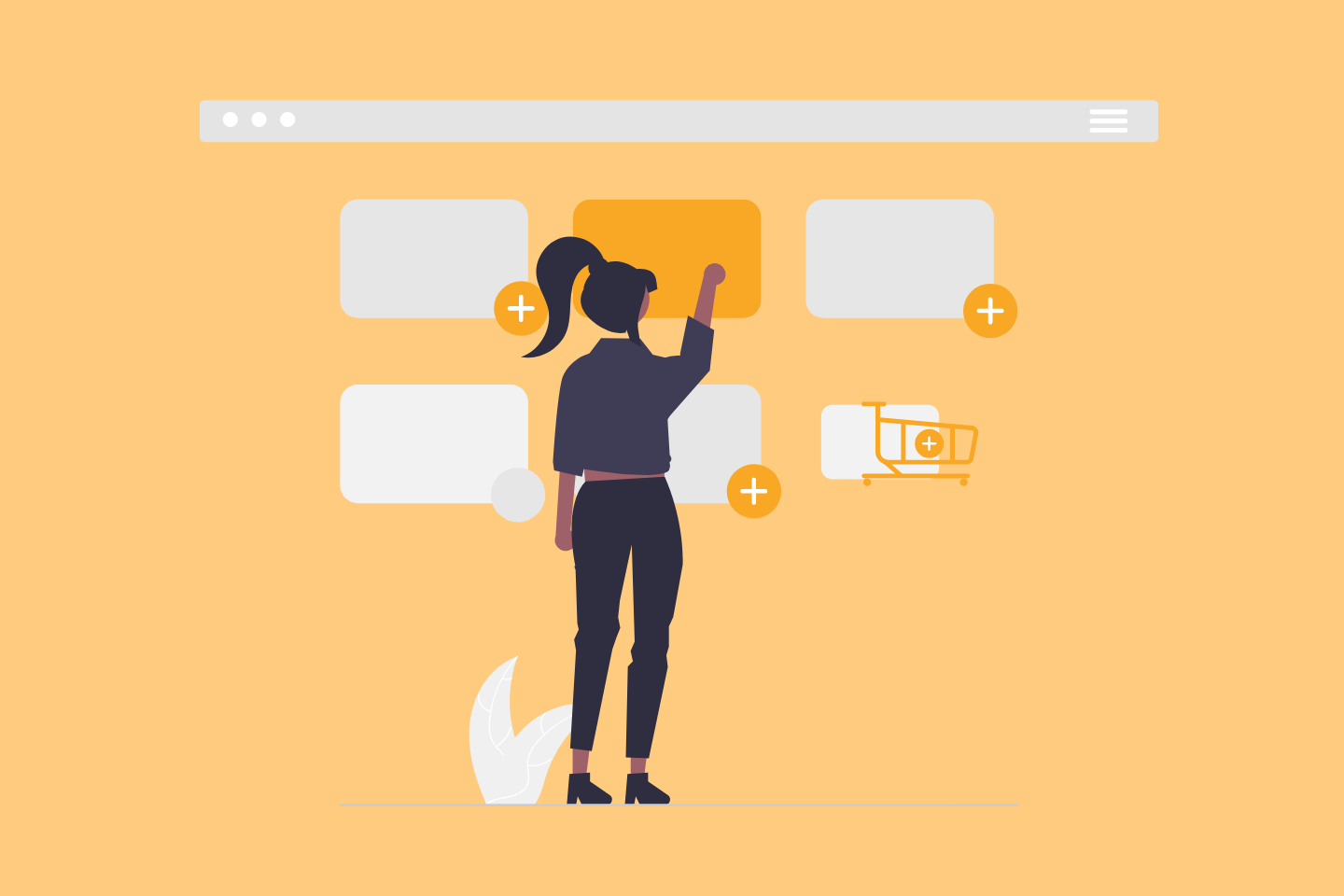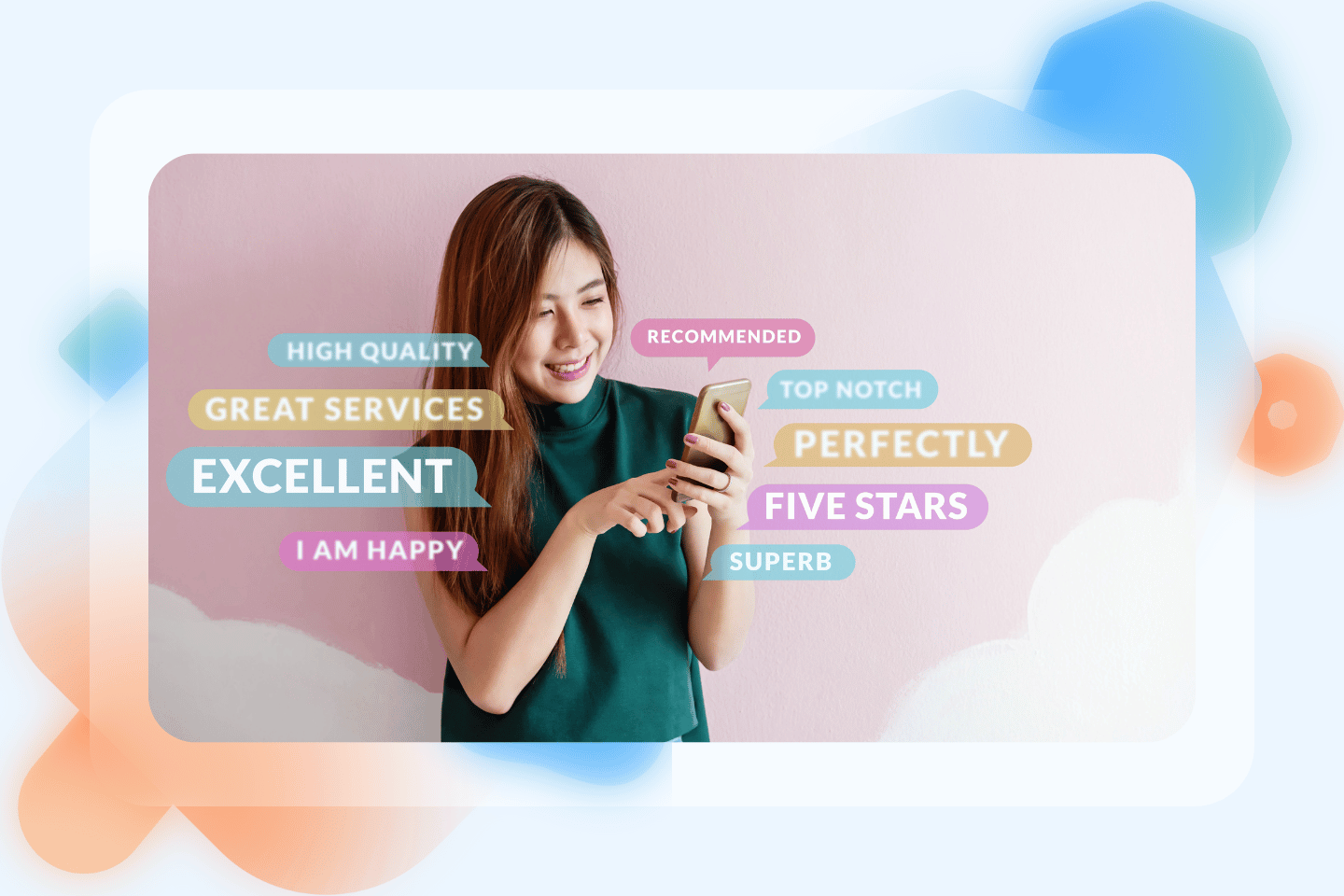Seeing new customers buy your products is exciting till the moment you realize they purchase once and never come back. Weak customer retention requires making more sales, exhausting your customer acquisition channels at some point or the other.
Also, a challenge to retain a customer means your customer lifetime value is low and it gets increasingly more difficult to achieve a return on investment.
How can you get a customer to stick with your business? We have collected eight ideas to help you gain the trust of the new clients. Let’s get into the thing!
1. Collect feedback with customer surveys
There is no better way to learn why customers don’t buy from your business any more than by asking them about it. By collecting feedback, you can understand what blocks your business from better customer retention and work on eliminating the blockers.
Creating online surveys is the first step to understanding your customers’ needs better. If you start collecting feedback on a regular basis, you can continuously improve your product and adjust it to market needs. Market trends, clients’ preferences, and legal environment change, so you have to keep track of these factors to offer products people want to buy.
Thanks to NPS surveys, you can analyze customer satisfaction and learn how likely they are to recommend your business to friends. With this survey type, apart from a 1 to 10 scale, you can also use open-ended questions to let customers explain the choice of the NPS score they give you.
You can reach your customers with an NPS survey in various ways ranging from embedding the survey on your client portal, displaying it as a popup, or adding it to an email campaign like in this example below. Also, you can choose among multiple online survey tools to get started with surveys.
Source: Slack email
2. Keep your promises
When talking to your customers on chat, phone, or email, you will hear a lot of suggestions about what your business has to improve to delight clients. Every business would do its best to respond to each and every suggestion positively.
However, some fixes can take a lot of time and, in some cases, customers file requests that you can’t follow because they are not viable from a business perspective or it is just impossible to create a successful implementation plan for them.
If you are sure there is no way you can introduce a certain change to how your business operates, don’t give false hope, but explain why certain things can’t be done. For example, if 99% of your customers are small business owners, you can’t develop your product according to the wishes of the 1% of enterprise clients.
Transparency is key. It works both ways. If you are promising customers something is going to be fixed at some time, do it. If you can’t fix something, just let your customers know what plans you have ahead.
What if you find it difficult to prioritize customer requests and often work on tasks that don’t change a thing for the majority of your client base? Here, you can find some examples of product prioritization roadmap. According to this framework, you have to rank a task by its impact, how much effort it requires to introduce, and value vs effort score to help you navigate this process better.
Source: Coda.io
Focus on the tasks that make the most impact, require the least effort from the product development team, and have the most value for a customer.
3. Educate your customers
The more your clients know about the benefits your product offers and how to use it, the more likely they are to stick with it for longer.
However, there is a difference between how an eCommerce business and a tech company would educate their clients.
Users of a complex SaaS tool would need proper onboarding to start using a tool, often an online demo with a customer support agent, walking a customer through the most crucial features. In this case, you would want to prove to your clients the value your tool offers.
Here are just some ways you can educate customers on using a complex product:
- industry blog
- monthly newsletter
- certification program
- in-app onboarding
- product webinars
- online demo
- knowledge base
On the other hand, clients of eCommerce businesses don’t need a huge knowledge base or online demos. In their case, customer support agents are at the front line of offering advice. You can also educate eCommerce customers through newsletters, online courses, blog articles, and social media.
No matter what business you are in, think about what blocks first-time customers from experiencing the value of your product and order again. Then, choose the right tools to educate them.
4. Reduce response time to questions
Offering a great product at a low price is often not enough; customers expect timely customer support. Around half of customers expect customer support agents to respond in less than 4 hours. There is also a less patient group of customers – the 12%, expecting a response just within 15 minutes.
However, only a small percentage of companies can respond to customer questions that fast. A big number of enterprises get back to their customers within a whopping 8 hours.
Source: SuperOffice
Work on reducing time to respond to customer questions and consider outsourcing customer support if you want to keep your focus on developing a product and marketing it to your target audience. To make it easier for your customer support team to manage customer requests you can equip them with AI chatbots or a social media engagement tool to handle repetitive interactions and decrease their response time.
5. Send more personalized emails
Make your emails resonate with your customers by personalizing them. These days, email personalization has gone much beyond adding a subscriber’s first name to the email body. To write more personal emails, you need to focus on segmenting your lists better. Here are just some examples of what subscriber groups you could include in your email segments.
- Demographic segmentation such as contacts’ age, gender, background, and occupation.
- Behavioral segmentation such as previous purchases, blog visits, and the type of product ordered.
- Geographic segmentation such as city, state, or country.
- Psychographic segmentation such as personality, motivations, lifestyle, values, and interests.
Once you have created your email segments, you can tailor email content for each of them. The good news is you don’t have to create multiple campaigns manually. With email marketing software that offers dynamic content, you can do everything in one campaign.
Before we move to the next point, let’s first see an example of a personalized email campaign. Spotify is segmenting its users by singers who they listen to the most and sending targeted campaigns on the behalf of the singer. Also, they are upselling the singers’ concert tickets and providing promo codes in their emails. They should definitely be getting some affiliate sales commission!
Source: Spotify email campaign
When creating your campaign, come up with some ideas on how you can personalize emails so it sounds as if you take your time and type your email manually to every subscriber on the list.
6. Create referral program
Customer referral programs won’t cost much to implement, but they can have a tremendous effect on your sales. Understanding your customer should become a starting point for designing your referral program. You have to brainstorm what could move a needle for – think of the reward to motivate.
A referral program can incentivize both parties – a referred person and a referee. The example below shows how you can communicate it to your customers.
Source: Soylent’s email campaign
By offering both parties an incentive to take part in the program, you increase your chances to succeed.
Also, remember to measure your results – you can use tracking links or a promo code. This way, you can attribute your online conversion the right way.
7. Build a community
Create a place online where your clients could ask topic-specific questions, take part in discussions, and help other community members by sharing their expertise. For example, if you are selling products for newborns, build a community for future parents.
Don’t advertise your brand, but build awareness around your products, give helpful advice to clients, moderate questions and answers so you can provide value to the community.
Also, apart from growing awareness about your brand, building a community has another positive side effect. You can also learn more about your clients’ needs, identify trends, and, as a result, create better products that sell like hotcakes – you can get a tone of information from the market by just reading community posts.
Take an example of Webflow and how this software company is building its community. There, members can ask questions related to troubleshooting issues that deal with no-code websites or get advice on this topic.
Source: Facebook
8. Surprise even if it is not scalable
Surprise customers from time to time to leave them with a positive impression about your business and earn their trust for higher customer retention.
Here are a few examples to give you an idea:
- handwritten notes
- get a CEO to answer support tickets
- send cookies for Christmas
- retweet your customers
- send a Starbucks coupon
- send a postcard
Wrap up
It is cheaper to retain an existing customer than acquire new ones. To have clients order from you again and again, you have to provide more value with your products. You can’t guess what your customers value the most about your business and what they dislike about it. That’s why you have to collect customer feedback with an NPS survey, analyze it, and keep improving your offering to fit your customers’ needs. Building a community around your brand, creating a referral program, or improving the response time to customer tickets are a few tips we have mentioned aimed to help you with customer retention. Time to put them into action!






